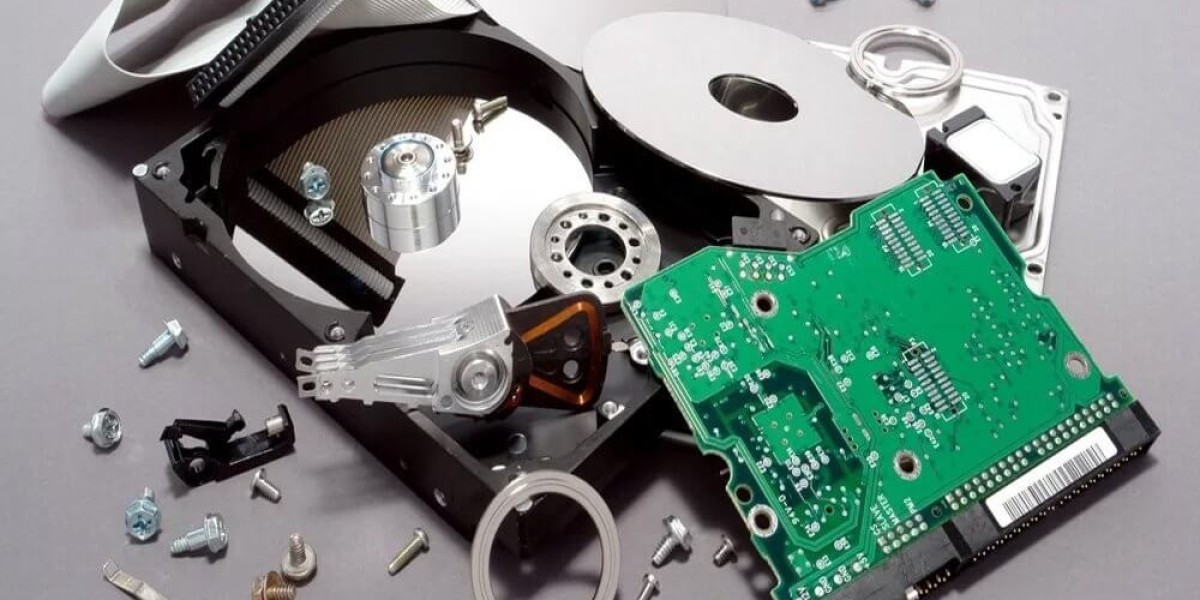In an age where data breaches and cyber threats dominate headlines, safeguarding sensitive information is more critical than ever. Hard drive destruction services offer a reliable solution to ensure that your confidential data is permanently eliminated, protecting you from potential risks.
Understanding Hard Drive Destruction
What is Hard Drive Destruction?
Hard drive destruction refers to the process of permanently destroying a hard drive to make the data stored on it irretrievable. Unlike simple deletion or formatting, this method ensures that data cannot be recovered by any means.
Why is it Important for Data Protection?
Every organization stores sensitive information, ranging from customer details to financial records. Failing to properly dispose of old hard drives could expose this information to unauthorized access, leading to severe consequences.
Overview of Destruction Methods
Common destruction methods include physical destruction, such as shredding and crushing, as well as electronic methods like degaussing. Each approach varies in effectiveness and suitability depending on the type of data and the industry’s compliance requirements.
Risks of Inadequate Hard Drive Disposal
Data Breaches and Identity Theft
Improper disposal of hard drives leaves organizations vulnerable to data breaches. Hackers can recover deleted files and use them for identity theft, fraud, or corporate espionage.
Regulatory Penalties and Legal Consequences
Failing to comply with data protection laws, such as HIPAA or GDPR, can result in hefty fines and legal actions. Proper hard drive destruction ensures compliance and mitigates these risks.
Methods of Hard Drive Destruction
Physical Destruction Methods
Shredding: This method involves breaking the hard drive into tiny fragments, rendering it unreadable.
Crushing: Using a hydraulic press or similar device, the hard drive is crushed beyond repair.
Disintegration: A specialized machine reduces the hard drive to fine particles, ensuring total destruction.
Data Wiping vs. Degaussing
Data Wiping: Overwrites the drive with random data multiple times but may not meet compliance standards for high-security industries.
Degaussing: Uses magnetic fields to erase data but requires proper equipment and expertise.
Pros and Cons of Each Method
Each method offers unique advantages. For instance, shredding is highly effective for large volumes, while degaussing is suitable for secure environments. However, choosing the right method depends on your specific needs and compliance requirements.
Choosing Professional Hard Drive Destruction Services
Benefits of Professional Services
Guaranteed Data Security: Professional services ensure complete and irreversible destruction of data.
Compliance: Certified providers adhere to industry regulations, reducing legal risks.
Convenience: They handle logistics, saving you time and effort.
Key Factors to Consider When Selecting a Provider
Reputation and reviews
Certifications (e.g., NAID AAA, ISO)
Range of services offered
Certifications and Compliance Standards
Look for providers certified in standards like HIPAA, GDPR, or SOC 2. These certifications demonstrate adherence to stringent security protocols.
On-Site vs. Off-Site Destruction Services
Pros and Cons of On-Site Destruction
Pros: Immediate verification, reduced risk of data theft during transit.
Cons: Higher cost, limited equipment availability.
Off-Site Destruction: Is It Safe?
Off-site destruction involves transporting hard drives to a secure facility. While cost-effective, it requires thorough vetting of the service provider to ensure safe handling.
Ensuring Environmental Responsibility
How Hard Drive Destruction Supports E-Waste Recycling
Destroying hard drives responsibly allows for proper recycling of materials like aluminum and rare earth metals, reducing environmental impact.
Environmental Regulations for Electronics Disposal
Many countries have strict laws governing e-waste. Partnering with compliant providers ensures adherence to these regulations.
Industries That Benefit From Hard Drive Destruction Services
Healthcare
Protecting patient records is vital for compliance with HIPAA regulations.
Finance
Banks and financial institutions safeguard sensitive customer data through secure destruction.
Government and Education Sectors
These sectors handle large volumes of confidential information that require secure disposal.
Legal and Compliance Considerations
HIPAA, GDPR, and Other Regulations
Hard drive destruction helps meet legal obligations, including data privacy laws like HIPAA and GDPR.
Documenting Destruction for Audits
Providers issue certificates of destruction, serving as proof of compliance during audits.
The Cost of Hard Drive Destruction Services
Average Pricing for Different Methods
Costs vary based on the method, ranging from $5 to $50 per drive. Bulk destruction often comes with discounts.
Factors Affecting Costs
Volume of drives
Method used
On-site vs. off-site services
DIY vs. Professional Hard Drive Destruction
Risks of DIY Destruction
DIY methods may leave residual data and fail to meet compliance standards, exposing you to risks.
Why Professional Services Are Safer
Professionals ensure complete destruction using certified methods, providing peace of mind.
Common Misconceptions About Hard Drive Destruction
Myth-Busting Data Recovery After Destruction
Many believe that data can still be recovered post-destruction. However, proper methods ensure total irretrievability.
Misunderstanding “Secure Deletion”
Simply deleting files or formatting drives does not erase data permanently, highlighting the need for destruction services.
How to Verify a Reliable Service Provider
Checking for Certifications and Licenses
Ensure the provider is certified and adheres to recognized standards.
Reading Reviews and Testimonials
Client feedback offers valuable insights into the reliability of a service provider.
Benefits of Regular Data Destruction Practices
Improved Security
Routine destruction reduces the risk of data breaches and ensures ongoing protection.
Compliance with Evolving Regulations
Keeping up with legal changes ensures your organization remains compliant.
Real-Life Examples of Data Breaches Due to Improper Disposal
Case Studies of Breaches Caused by Improper Hard Drive Disposal
Incidents like the 2013 Target breach highlight the risks of inadequate data disposal.
Lessons Learned from Major Incidents
These breaches underscore the importance of secure data destruction practices.
FAQs About Hard Drive Destruction Services
1. What is the safest method of hard drive destruction?
Shredding and disintegration are considered the safest and most effective methods.
2. How much does hard drive destruction cost?
The cost typically ranges from $5 to $50 per drive, depending on the method and provider.
3. Can I destroy hard drives myself?
DIY methods are risky and may leave data recoverable. Professional services are recommended.
4. What is a certificate of destruction?
A document issued by the provider certifying that the hard drives were destroyed securely.
5. Are hard drive destruction services environmentally friendly?
Yes, responsible providers recycle materials and adhere to environmental regulations.
6. How do I choose a reliable service provider?
Look for certifications, positive reviews, and a history of compliance with standards.
Conclusion
Hard drive destruction services are essential for protecting sensitive information, ensuring compliance, and supporting environmental responsibility. By partnering with a reliable provider, you can safeguard your data and mitigate risks effectively. Take action today to secure your organization’s future.







